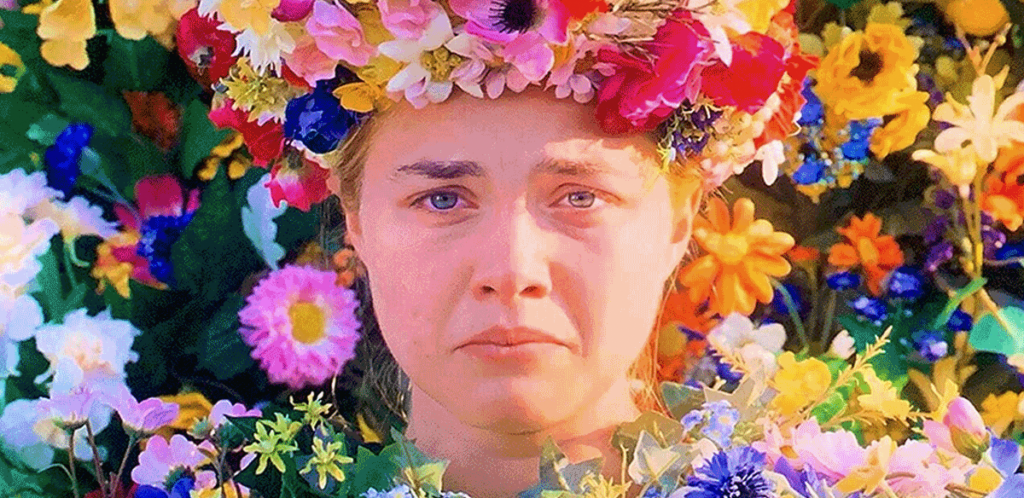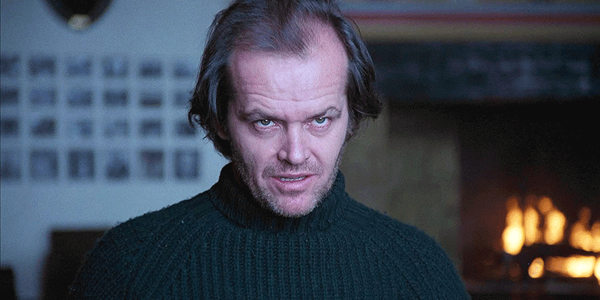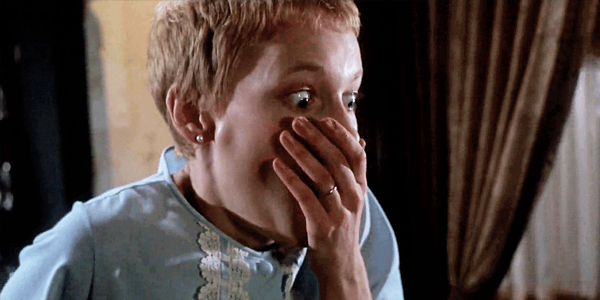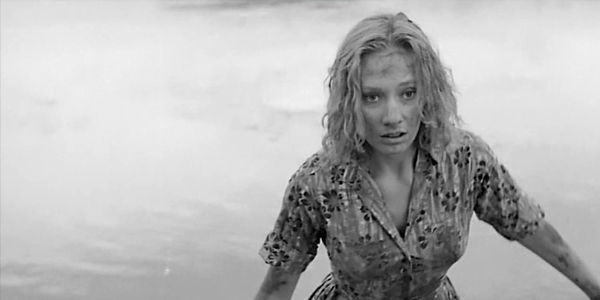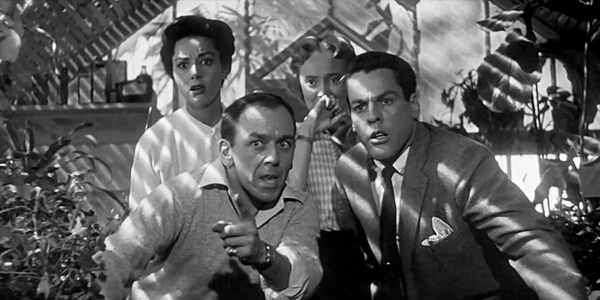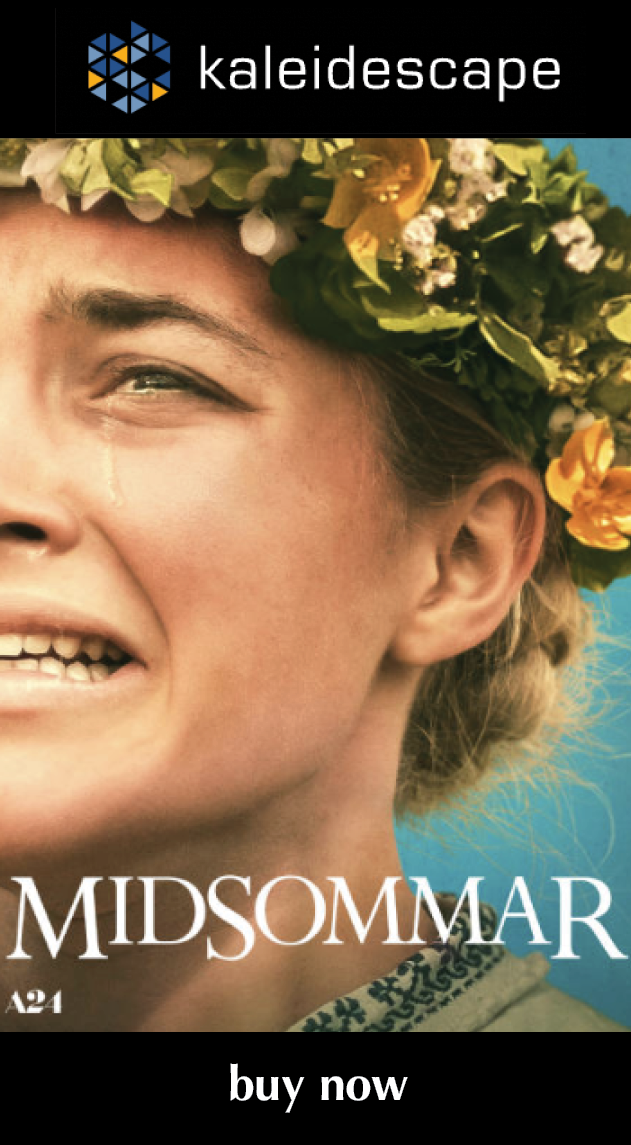related reviews
Sign up for our monthly newsletter
to stay up to date on Cineluxe
This arthouse horror film eschews jump scares and plot twists for atmosphere and style
by Dennis Burger
October 14, 2020
One relatively recent trend that warms my dark heart is the reemergence of horror as a legitimate genre of cinema. This isn’t to say that I don’t get a kick out of schlocky B-movie suspense but for most of my adult life, horror movies have been little more than that, leaving legitimate attempts at making serious films in the genre—like Rosemary’s Baby and Kubrick’s The Shining—in the distant past. So to see Jordan Peele’s Get Out, Darren Aronofsky’s Mother!, and Ari Aster’s Hereditary embraced in recent years as art is, if nothing else, a step in the right direction.
Aster’s follow-up to Hereditary, 2019’s Midsommar, keeps the horror-as-art train rolling, not simply due to its gorgeous cinematography, deep reliance on symbolism, or its 148-minute run time, but because it actually has something to say. While Peele used horror for the purposes of societal allegory in Get Out and Aster himself used it to explore familial angst in Hereditary, Midsommar broadens its reach to explore both cultural issues and deeply personal struggles. And it’s the constant tug-of-war between the individual on the one hand and the expectations of the herd on the other that give the film so much of its tension.
That’s simply one element of what makes the film work, though. In telling the tale of a group of anthropology students (and the girlfriend of one of them, herself a psychology student) as they travel to Sweden to study and document the cultural traditions of an isolated Scandinavian commune, Aster uses personal relationships the way Kubrick used architecture in The Shining. In other words, if you’re paying attention, there’s an internal consistency to it all that’s nonetheless contradictory, which results in a foreboding sense of unease.
That in itself wouldn’t be worthy of praise but it’s the way Aster and cinematographer Pawel Pogorzelski convey the ties that bind (and the wedges that divide) the characters that makes Midsommar so fascinating. In one early scene, for example, the film uses mirrors brilliantly to convey a sense of othering. The characters viewed directly by the camera? They are the “Us.” Those that can only be seen in reflection? They fall (or move) into “Them” territory. And what’s fascinating here is that the film’s “Us” and “Them” are right opposite of the audience’s “Us” and “Them,” which further builds tension.
What I appreciate most is that such compositional sleight of hand is almost always employed with such subtlety that it never comes across as a gimmick. Only one scene crosses the line into artsy-for-arty’s-sake territory, and it’s an establishing shot, demarking the transition from one culture into the other, so it’s easily forgiven.
That scene is far from the only one that could be construed as cinema-for-cinema’s sake. So much of Midsommar is pure audiovisual experience—style as substance, if you will—intended to invoke feeling rather than trigger thought. Perhaps my favorite thing about the film is that it strikes such a perfect balance in alternating between storytelling and tone poetry that it’s nearly two-and-a-half-hour runtime never becomes a slog.
That’s aided by the fact that it never resorts to jump-scares or twists to keep you hanging on. It telegraphs exactly the direction in which it’s heading and then takes its time getting there, which only adds to the suspense and tension.
The one big surprise—at least for me—is that Midsommar wasn’t shot on film, but rather captured in a combination of 8K and 4K, and finished in a 4K digital intermediate. Despite this, it boasts a very film-like aesthetic, although the palette is intentionally muted. And Kaleidescape’s 4K HDR presentation is wonderfully true to Midsommar‘s intended look, delivering it with exceptional detail. Far more importantly, the Kaleidescape download doesn’t muck up the background textures the way streaming providers do. Perhaps it’s a result of the resolution at which the movie was shot, but Apple TV’s stream in particular suffers from occasionally messy and noisy textures that serve as a bit of a distraction, whereas the Kaleidescape download maintains its composure from beginning to end, even when the film is at its densest, visually speaking.
The high dynamic range does little to change the look of the film overall, largely due to that muted palette. When HDR does make itself known, it’s generally in the shadows, especially during those scenes in which a darkened interior is viewed from a sunlit exterior. HDR allows the viewer to see into those shadows without brightening the image as a whole.
Kaleidescape’s DTS-HD Master Audio 5.1 soundtrack is also true to the film’s theatrical audio mix. You may have seen Midsommar presented in Dolby Atmos on certain streaming platforms, but these Atmos tracks were created using Nugen Audio’s Halo upmixer software, based on the original 5.1. Given my druthers, I’ll take the original mix, thank you very much. It’s unusually aggressive, in a way I normally don’t love, but in this case it absolutely works.
The soundtrack leans on the surround channels hard, often panning dialogue into them so fully that if your rear speakers aren’t up to the quality of the rest of your system, you’ll likely hear a shift in the quality of the sound. Even if your system is well-designed from front to back, it’s still a disorienting and frankly distracting effect. But that’s the point. The mix rarely goes whole-hog on the surrounds when there’s something crucial happening onscreen. And when it does, it’s because the film wants to you feel disoriented at that moment.
The only thing missing from Kaleidescape’s download is Aster’s original 171-minute cut, which A24, the film’s distributor, made him trim down for wide theatrical release. Given that the cuts were made simply to cram more butts into seats and not due to content, it’s strange that A24 is so precious with the original edit. In the US, the only ways to see it are via Apple TV (it’s included as an iTunes Extra with the purchase of the film) and by way of an incredibly limited 4K Blu-ray release that’s already fetching six times its original asking price on the secondary market.
What I wouldn’t give to view that cut of the film in the quality of Kaleidescape’s presentation. Despite its nearly three-hour length, the director’s cut is even better paced and frankly feels like a shorter film. But the improvements over the theatrical cut aren’t so substantial that I would choose Apple TV’s compromised stream over Kaleidescape’s pixel-perfect download.
Dennis Burger is an avid Star Wars scholar, Tolkien fanatic, and Corvette enthusiast who somehow also manages to find time for technological passions including high-end audio, home automation, and video gaming. He lives in the armpit of Alabama with his wife Bethany and their four-legged child Bruno, a 75-pound American Staffordshire Terrier who thinks he’s a Pomeranian.
© 2023 Cineluxe LLC


